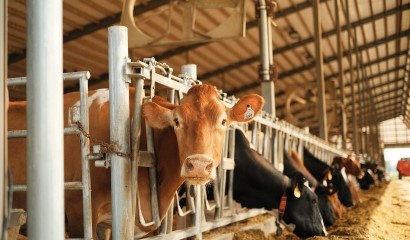CASE PROFILE: Robertshaw US Holding Corp to sell assets in Chapter 11 backed by USD 56m DIP, purchase agreement with lenders
Electronics manufacturer Robertshaw US Holding Corp (Robertshaw US) filed for Chapter 11 in the wee hours this morning (15 February), one day before their response was due in a state court lawsuit with certain of their lenders.
The bankruptcy filing comes a day before the company was set to file a response in New York state court litigation. The company has a restructuring support agreement (RSA) setting up the sale of its assets backed by a stalking horse bid from an entity owned by Bain Capital, Eaton Vance Management, Canyon Partners, and One Rock Capital Partners II.
The company has lined up USD 56m in debtor-in-possession (DIP) financing to fund the case. Though the Chapter 11 petition initially stated that the DIP is USD 55m, the actual DIP motion puts the financing at USD 56m. As their stalking horse bid, the lender entity has agreed to credit bid both the DIP and USD 217m outstanding on the superpriority first out debt, assume certain liabilities, and fund a winddown budget. The RSA lays out a sale timeline for the case, proposing a 19 April auction.
Robertshaw US will soon launch two adversary proceedings in the Chapter 11 case: one to resolve a May 2023 uptier transaction dispute and a second to handle a December 2023 declaratory judgment action.
The company has requested a first day hearing for 2pm CT this afternoon, but Judge Christopher Lopez of the US Bankruptcy Court for the Southern District of Texas has not yet officially scheduled a hearing.
Debtwire Dockets: Robertshaw US Holdings Corp (Access Required)
The company
Robertshaw’s history dates to Frederick Robertshaw’s 1899 creation of a home water heater thermostat. Today, Robertshaw US is a manufacturer of electronic controls, switches, and valves for appliances. Its products include air conditioners, cooking, dishwashing, heating, and other products.
The parent Robertshaw entity has 11 manufacturing facilities in North America, Europe, Asia and Latin America. The US entities that are debtors in the Chapter 11 filing are headquartered in Itasca, Illinois, and have store inventory at facilities in Laredo and Brownsville, Texas.
For the fiscal year ended March 2023, the debtors generated USD 85.8m in gross profit and USD 30.3m in EBTIDA. For the nine months of the fiscal period ending 31 December 2023, the company reported a gross profit of USD 55.8m and EBITDA of USD 14.8m.
The debt
Robertshaw US enters Chapter 11 with USD 832.5m in prepetition secured debt, with priority ranging from first out to seventh out plus a promissory note for its non-debtor Mexico operations.
The company also owes USD 37m to unsecured creditors.
The descent
The company blames its financial troubles on looming debt maturities, a “challenging” capital structure, product shortages and supply chain challenges stemming from the COVID-19 pandemic, CEO John Hewitt said in his first day declaration.
The company faced a shortage of “numerous critical individual component parts,” preventing it from turning its inventory into finished goods, and a “significant number” of customers stockpiled Robertshaw US inventory during and after the pandemic, leading to a substantial drop in sales in 2022, Hewitt said.
In May 2023, facing a liquidity strain and an upcoming maturity on one of its outstanding loans, Robertshaw US negotiated an uptier transaction. First, the lenders who would later be involved in the deal bought up a significant portion of the company’s first and second lien debt and used that position to help push through amendments to the loan agreements to make an uptier exchange possible.
With the restraints on the loan eased, Robertshaw US borrowed USD 95m in new first out term loans that had the same collateral as the company’s existing debt. The company then borrowed USD 370m in new second out loans and USD 65m in third out loans and used the proceeds to exchange the legacy first and second lien debt held by the uptier lenders. Robertshaw US also created new fourth and fifth out tranches of debt.
In all, the lenders who did not participate in the exchange now face USD 533m in higher priority first lien debt ahead of them in the capital structures, and the second lien lenders have that new debt plus USD 163m ahead of them. The excluded lenders, led by The Guardian Life Insurance Company of America, sued the debtor and lenders Bain Capital, Eaton Vance Management, Canyon Partners, One Rock Capital Partners II, and Invesco, in November 2023 in New York Supreme Court accusing them of violating the credit agreement through the uptier transaction.
With that action pending, lender Invesco filed another complaint against Robertshaw US and the lenders in the same court in December 2023. Until 8 December 2023, Invesco said, it was the holder of more than 50% of the first out new money term loan and second out term loan. But Robertshaw equity sponsor One Rock “colluded” with Robertshaw’s minority lenders to “wrest that control away from Invesco through an illegal sham transaction.” In that transaction, the defendants in the second suit formed a new entity that made an equity contribution to Robertshaw, which the company then used to repay the first out new money term loan almost in its entirety, taking away its status as a “required lender” that had given it broad rights under the credit agreement.
In that case, Invesco asked the court to impose a temporary restraining order (TRO) and preliminary injunction blocking the transaction. Earlier this week, Robertshaw US responded in opposition to the TRO request.
Robertshaw US, in the newly filed first day declaration, gives a different account of the back-and-forth with Invesco. The debtor reports that it and Invesco, when it was the “required lender,” entered a series of forbearance agreements, the last of which would have required the company to file for Chapter 11 with a stalking horse purchase agreement by 2 January 2024. As Invesco and One Rock pursued out-of-court restructuring options, it “became clear” that Invesco wanted to use its “required lender” status to credit bid for the company’s assets and “abandoned any pretense of good faith negotiations” at any solution other than Chapter 11.
In the wake of that dispute, Robertshaw US completed the minority noteholder transaction, through which it repaid all USD 30m outstanding on an asset-based loan, repaid USD 117.6m in first lien term loans, a USD 27.6m makewhole premium, and USD 3m interest. At the same time, the company brought in USD 43m in new liquidity from the lenders and, later, another USD 228m in new first and second out term loans. That deal gave the company sufficient liquidity to avoid the early January Chapter 11 filing and gave it time to negotiate the stalking horse deal and RSA with the consenting lenders, according to the declaration.
On 6 February, the plaintiffs in the November 2023 uptier litigation filed a notice that they were dismissing their claims against Invesco, Eaton Vance, and Bain Capital, but did not give a reason. A week later, Robertshaw filed for Chapter 11 in the Southern District of Texas.
The Chapter 11 case
Now the company aims to sell certain of its assets in Chapter 11, backed by a stalking horse bid from an entity owned by Bain Capital, Eaton Vance Management, Canyon Partners, and One Rock Capital Partners II.
Robertshaw has also lined up USD 56m in DIP financing to support the case.
In regard to the two New York lawsuits, Robertshaw will file declaratory judgment actions to resolve both of them in the Chapter 11 case.
The advisors



















